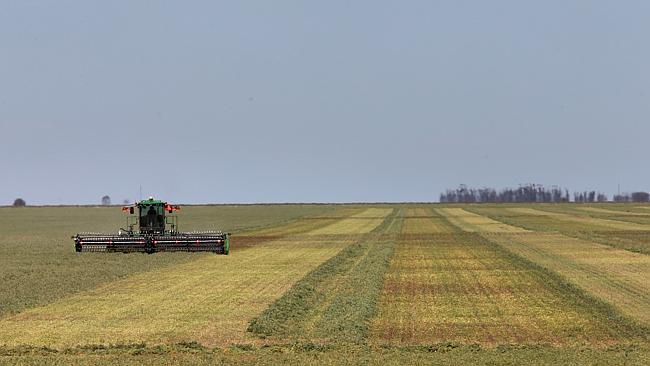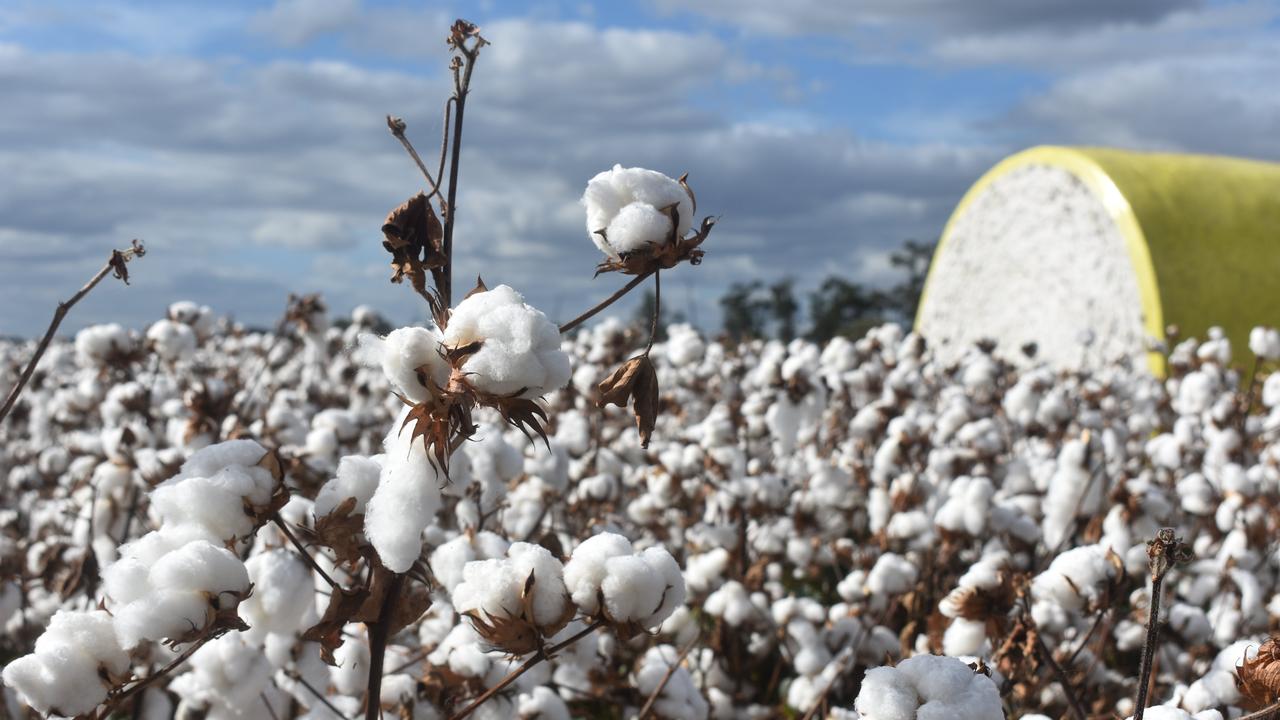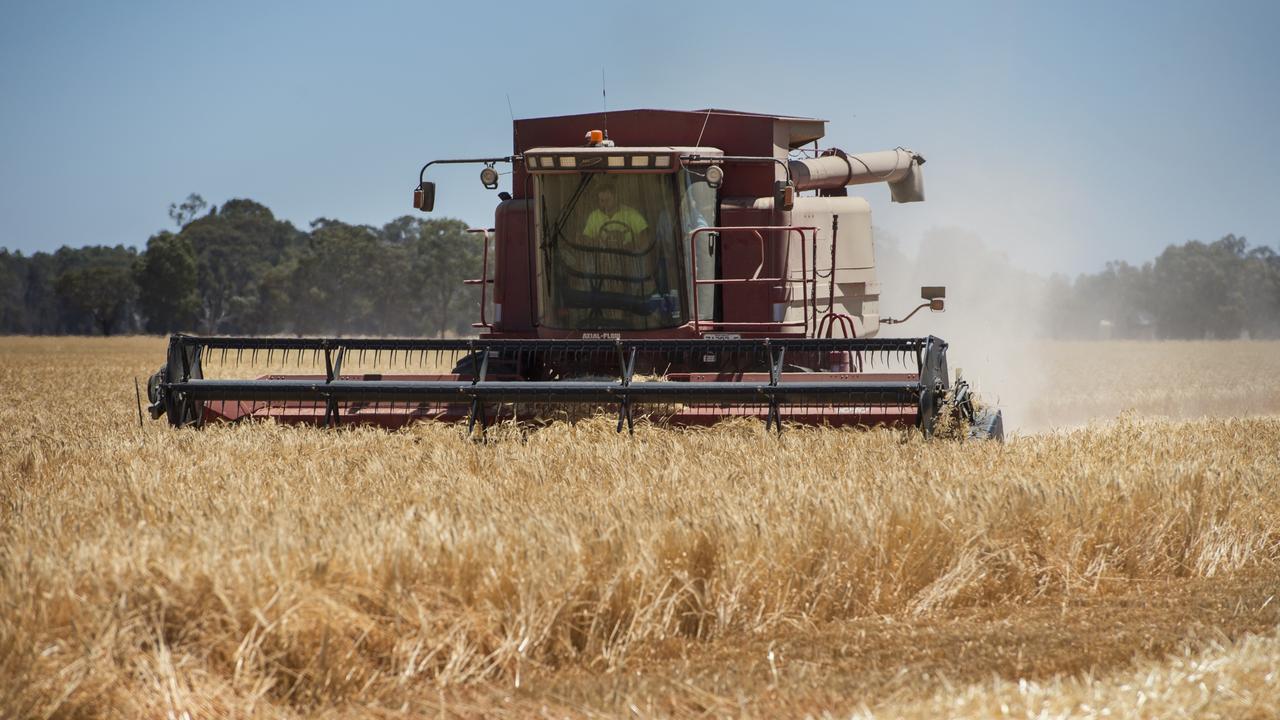Growers scramble to salvage heat-ravaged crops after cruel cut
SCORCHING temperatures and hot winds have devastated crops just weeks out from harvest.

SCORCHING temperatures and hot winds have devastated crops just weeks out from harvest.
Some farmers in western Victoria have said they will strip less than half their crops for grain following a five-day heatwave over the past week that saw the mercury nudge 40C in parts of the parched Mallee, Wimmera and southern NSW.
The heatwave follows a particularly dry start to spring and has prompted many farmers to cut their crops for hay now rather than risk not getting a return from grain.
Bureau of Meteorology senior forecaster Scott Williams said this week’s heatwave was the first clear sign the El Nino weather pattern — which experts claim is the strongest since 1997 — was “really starting to bite”.
Mildura hit 37.5C on Sunday and Monday and averaged 35.2C for the four days to Monday — more than 10C above average for this time of year. Yesterday, it was forecast to hit 38C. Swan Hill averaged 34.7C and Horsham 33.5C.
RELATED COVERAGE
Donald farmer Damon Pert said the deteriorating season meant he would only harvest 40ha, or 3 per cent, of 1214ha of crops planted this year.
“We had barley, peas and vetch sown this year but the conditions are worse than last year and we will barely be cutting the crops for hay,” Mr Pert said.
Victorian Farmers Federation grains president Brett Hosking described the conditions as “devastating”. Elders Wycheproof manager Jim Coffey said crops were “going backwards every hour”.
Dodgshun Medlin agricultural adviser Matt Witney, whose family farms at Culgoa, west of Swan Hill, said he had never experienced heat for so long this early in spring.
“It will reduce yields, but by how much also depends on other factors,” Mr Witney said. “The less advanced the crop, the more likely it will suffer.”
Ouyen farmer Ian Hastings said the temperatures of the past week had “done a huge amount of damage” and had “taken away two things — yield and hope”.
“There is now no hope of rain being of any value (for the remainder of the cropping season),” said Mr Hastings, who estimated the weather had stripped 10-15 per cent from his wheat yield.
South of Horsham, farmer David Grimble said the hot weather, coupled with “very poor” spring rain, had a “magnifying effect” on crops. He said while some would likely be cut for hay many should still be harvested for grain.
“We should get through but we’re running very low on moisture reserves,” he said.
Horsham farmer and harvest contractor Peter Velthuis said he had been “swamped” with inquiries from farmers wanting to cut their cereal crops — which they would normally harvest for grain — for hay “so they can get something out of them”.
Mr Velthuis said he had cut his wheat crops for hay, and while his barley was “holding on” his canola crops were “in full flower and dying”.
“They are collapsing — you see them change colour every time you drive past them,” he said.
West of Warracknabeal, farmer Marshall Rodda said, while crops “have still got some potential, they’re not completely buggered by any means”, every week “we don’t get a rain to help them finish, we’re just losing yield”.
Edenhope farmer Richard Wait said, “The most disappointing thing is the fact we were only one good rain off a cracking season.”
Australian Fodder Industry Association chief executive Darren Keating (pictured) said the hot weather, “based on the back of not a lot of soil moisture, has really hurried” the hay season along.
Some farmers were cutting crops that were frost affected or “just haven’t made it” while others were “trying to hedge their bets” in cashing their crops in for hay, h e said.
The amount of hay coming on to the market, and its impact on prices, was still unknown.
“We don’t believe there is going to be a lot of carry-over hay from last season going into 2016, so there is not a lot of hay around,” he said.
Grain Industry Association of Victoria secretary Colin Peace said if 5 per cent of Victoria’s wheat crop was cut for hay it would increase the state’s hay production by 20 per cent.
In another sign of the tough times, he said Australian eastern wheat futures had surged $21 a tonne in the past week to $302 for a January delivery.
VFF vice-president David Jochinke, of Murra Warra, said the warm weather did not necessarily mean “armageddon” for crop producers.
“There are some really good barley and lentil crops through our district. There’s actually a sniff of a hope that things could be OK still, and OK being OK on the below side of average,” he said.
But Wycheproof farmer Stuart McLean said without any significant rain soon the situation could become “very, very serious”.
“For some people, it is their second failure in a row and both years they’ve put crops in — it’s not as if we’ve had a prolonged drought, we’ve had seasonal breaks and then we’ve had seasonal failures,” Mr McLean said.
Mr Hosking said the VFF was organising for Agriculture Minister Jaala Pulford to visit farms in regions hit by two bad seasons in a row.
“We don’t yet know just how bad things will prove to be, we hope they can turnaround a bit, but that doesn’t look likely,” he said, adding mental health was “already a huge concern”.


